Episodes
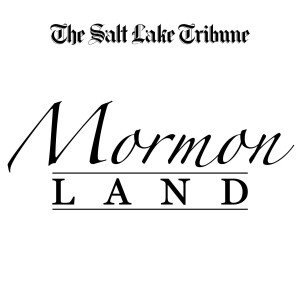
Wednesday Jun 05, 2024
Wednesday Jun 05, 2024
Forty-six years ago this month, The Church of Jesus Christ of Latter-day Saints, under then-President Spencer W. Kimball, lifted its prohibition preventing Black men from entering the all-male priesthood and Black women and men from participating in temple rites.
This historic shift, the most significant since the faith stopped practicing polygamy, abruptly ended this racist ban, but it hardly ended racism within the church. After all, 126 years of theological justifications for the ban remained, including influential works such as “Mormon Doctrine” by apostle Bruce R. McConkie.
Cleanup still needed — and needs — to be done.
Building on President Gordon B. Hinckley’s outreach efforts, current church leader Russell M. Nelson has called on members to lead out against racism and has cemented ties with the NAACP.
Matthew Harris’ new book, “Second-Class Saints: Black Mormons and the Struggle for Racial Equality,” explores the history of the priesthood/temple ban, from its racist roots under Brigham Young to its removal and its aftermath, with an eye especially on its effects on Black Latter-day Saints.
With unprecedented access to the papers of Kimball, McConkie, Hugh B. Brown and Joseph Fielding Smith, Harris offers an insider view of the decision-making process among the church hierarchy regarding issues of race and this momentous move. Join us for this conversation.
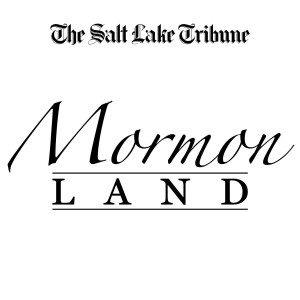
Wednesday May 29, 2024
Wednesday May 29, 2024
For The Church of Jesus Christ of Latter-day Saints, there is much to celebrate in its latest statistical report: The worldwide growth rate in the 17.2 million-member faith is growing. The expansion of congregations is expanding. And the number of U.S. states with declining membership is, well, declining.
East Africa, meanwhile, is booming, the U.S. is rebounding, and many growth measures have met or surpassed pre-pandemic levels. Still, there are causes for concern: West Africa, unlike the continent’s eastern and central regions, has seen its Latter-day Saint growth slow. While the U.S. enjoyed an increase in net membership, it once again had the largest net decrease in wards and branches. California continues to bleed Latter-day Saints and growth rates in Utah, home to the global faith’s headquarters, remain near historic lows.
On this week’s show, Matt Martinich, an independent researcher who tracks church movements for the websites cumorah.com and ldschurchgrowth.blogspot.com, dissects all this data and deciphers what the numbers say about the state of the church.

Wednesday May 22, 2024
Wednesday May 22, 2024
Since shortening its Sunday services and refocusing its curriculum more than five years ago, The Church of Jesus Christ of Latter-day Saints has trumpeted a home-centered, church-supported approach with an emphasis on covenant-making and covenant-keeping.
This shift has some members worried about a loss of community.
Gone are roadshows, pageants, sports leagues, cultural celebrations and more. While there has been an explosion of temple building, there has been a slowdown in chapel building. The church meetinghouse of today has become just that — a house for staid and stiff meetings, mainly on Sunday — and not the buzzing and bustling community centers of yesteryear.
Would a return to some of that past help not only the church’s present but also its future?
Candice Wendt, a staff member of McGill University’s Office of Religious and Spiritual Life and a contributing editor at Wayfare magazine, wrote about the church’s evolution from community to covenants in a recent blog post for Exponent II.
She joined us for this week’s episode of “Mormon Land” to talk about what she feels is lost in the church’s efforts to emphasize individual covenants over community building.
As she put it “I find when community connection and belonging get weak, motivation to be engaged in the faith tradition falters and religious life actually becomes a lot less relevant to people.”
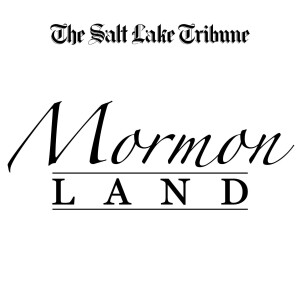
Wednesday May 15, 2024
Wednesday May 15, 2024
Born in West Germany, Ralf Grünke has been a member of The Church of Jesus Christ of Latter-day Saints for most of his life. But it was complicated. And, among his Catholic and Lutheran peers, that meant he sometimes keenly felt his “otherness.”
Still, being “an ugly duckling between the swans,” Grunke has written, was a “blessing in disguise.”
He studied his own faith deeply, reading everything he could find, pro or con, as well as other faiths, and developed a strong foundation spiritually and scholarly. He now enjoys a spectrum of friends and contacts among all religions, while representing the Utah-based church.
Grunke is the church’s assistant communication director for Central Europe, headquartered in Frankfurt. He joined “Mormon Land” for a special on-location podcast in Hamburg about the faith’s status on the Continent.
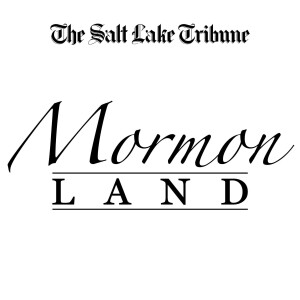
Wednesday May 08, 2024
Wednesday May 08, 2024
Without a doubt, says writer and scholar Caroline Kline, Latter-day Saint leader President Camille Johnson would have heard former church presidents telling working mothers to “come home” and focus on their families.
Instead, she pursued a 30-year career as a corporate lawyer.
In this episode of “Mormon Land,” Kline, assistant director of the Center for Global Mormon Studies at Southern California’s Claremont Graduate University, explains just how radical it is that the top brass of The Church of Jesus Christ of Latter-day Saints are lauding her as a role model — and why their decision to do so may be a tough pill to swallow for some.
The author of “Mormon Women at the Crossroads: Global Narratives and the Power of Connectedness” also breaks down what she sees as an increased anxiety by church leadership over female members’ activity and level of devotion, why their current efforts to reverse worrisome trends could backfire and what they could do instead to make women feel more at home.
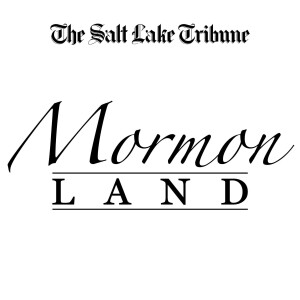
Wednesday May 01, 2024
Wednesday May 01, 2024
The role of women in any patriarchal faith is always fraught. It is especially confusing in The Church of Jesus Christ of Latter-day Saints, which celebrated women who led the charge for suffrage while also practicing polygamy.
Past Latter-day Saint women like Eliza Snow and Emmeline Wells held high-profile positions in the hierarchy almost until their deaths — Susa Young Gates, an influential daughter of church prophet Brigham Young, was even dubbed a “13th apostle” — while today’s top female leaders are in and out in just five years.
Earlier general presidents of the women’s Relief Society were well known to members and wielded wide personal power, but, like the current high-level female leaders, they never held offices as “general authorities.”
Now comes word that, unlike yesteryear, today’s General Relief Society Presidencies don’t even meet weekly with an apostle “liaison” to the governing First Presidency.
On this week’s show, April Young Bennett, a blogger and essayist for Exponent II who has seen the evolving changes for Latter-day Saint women, discusses where top female leaders stand in today’s church, what could or should be done to elevate their status, and whether women’s ordination is the only way to truly balance the gender scales in the global faith.
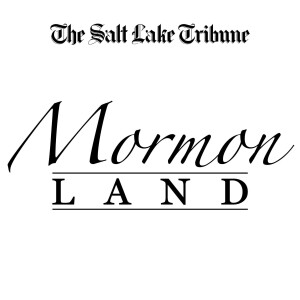
Wednesday Apr 24, 2024
Wednesday Apr 24, 2024
All kinds of believers and nonbelievers have described brushes with death in which they briefly left their bodies to see and feel otherworldly elements. While most scientists say these “near-death experiences” are the product of neurons firing in particular ways under particular stress, many who are religious view them as objective encounters, occurring in space and time.
Members of The Church of Jesus Christ of Latter-day Saints seem particularly intrigued by the way such experiences affirm their teachings of the afterlife and have rushed to buy the many books on the topic, including Betty Eadie’s 1992 bestseller, “Embraced by the Light,” and, more recently, John Pontius’ “Visions of Glory: One Man’s Astonishing Account of the Last Days.”
While Eadie’s book tapped into New Age Mormonism popular in the 1980s and ‘90s, “Visions of Glory” — and the writings of Chad Daybell, a Latter-day Saint writer in Idaho who has been accused of murder — seems to draw on apocalyptic and political speculations.
On this week’s show., historian Matthew Bowman, director of Mormon studies at Claremont Graduate University in Southern California and author of “The Abduction of Betty and Barney Hill: Alien Encounters, Civil Rights, and the New Age in America,” discusses this genre and its implications in Latter-day Saint culture.
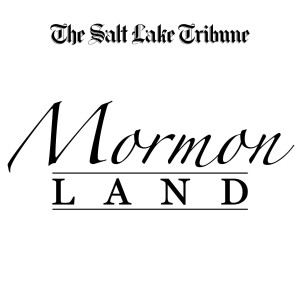
Wednesday Apr 17, 2024
Wednesday Apr 17, 2024
Few conversations are as fraught as those among family members who disagree about ideas they hold dear, and none more so than religion.
Such exchanges can be especially painful for believers in The Church of Jesus Christ of Latter-day Saints, a faith that can be all encompassing with strong teachings about here and the hereafter, especially about family relationships, and practices that reflect those teachings.
So what happens in families when some hold firm to the faith and others walk away? How do parents, children and siblings respond to those who have chosen a different path? Can they still love one another or does judgment make that impossible? Do they talk about it or do they slink away in silent agony?
Utah Valley University’s Kimberly Abunuwara, director of the humanities program, came up with an unusual way to explore these questions. She enlisted a group of students to interview various families about how their attachment to — or distance from — Mormonism affected their connections and communications.
The team then staged a performance, titled “In Good Faith,” in which student actors used those firsthand accounts from members and former members to reveal these wrenching experiences.
In a special “Mormon Land” episode, recorded live at Orem’s UVU, Abunuwara and two of the student performers — Brielle Szendre and Caleb Voss — are discuss what they discovered, how the experience affected them and what others can learn from this effort.

Wednesday Apr 10, 2024
Wednesday Apr 10, 2024
The recently completed 194th Annual General Conference of The Church of Jesus Christ of Latter-day Saints may merit no more than a mere mention in the history books of Mormonism. There were no theological breakthroughs, no major policy changes, no sweeping shake-ups among the top echelons.
But the sessions did feature significant speeches, memorable moments and notable nuances. A British church leader delivered his debut conference sermon as an apostle. A longtime apostle returned to the conference pulpit after an extended absence. A Black general authority rose in the ranks to a historic level. Speakers publicly addressed the private wearing of so-called temple garments by the faithful. And the church’s aging senior leadership, led by a prophet-president inching ever closer to the century mark, made conspicuous accommodations to conference procedures.
On this week’s show, Emily Jensen, web editor for Dialogue: A Journal of Mormon Thought, and Patrick Mason, head of Mormon history and culture at Utah State University, look back at the conference and what it may mean to the church and its 17.2 million members moving forward.
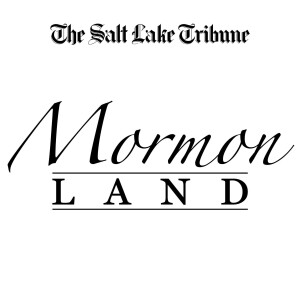
Wednesday Apr 03, 2024
Wednesday Apr 03, 2024
Latter-day Saint leaders seem to be concerned about what they believe is the causal, even “cavalier” wearing of religious underclothing by devout members.
Indeed, in a recent speech, a general authority Seventy reportedly condemned women who wear temple garments only on Sunday and to the temple and the rest of the week can be seen in “yoga pants.” He warned that The Church of Jesus Christ of Latter-day Saints was planning to issue stricter rules about the wearing of garments.
The standard instruction has essentially been for women and men to wear them “day and night.” According to a recent survey, though, some women are donning them when and where they want — and they don’t, it seems, view that as disobedience or inappropriate. At the same, it is getting tougher to find clothing, especially for women, that completely covers garments.
On this week’s episode, author Kristine Haglund, former editor of Dialogue: A Journal of Mormon Thought, and Laura Brignone, a Latter-day Saint research analyst at Sacramento State University, discuss the challenges in wearing garments, what some members are choosing, and what it means for their faith.

More Mormon Land
There's more to "Mormon Land" than just the podcast. You can get access to episode transcripts, Tribune faith stories and more on Patreon.
Sign up for the free weekly Mormon Land newsletter to get the latest happenings about the church from around the world.
And follow Mormon.Land on Instagram.







